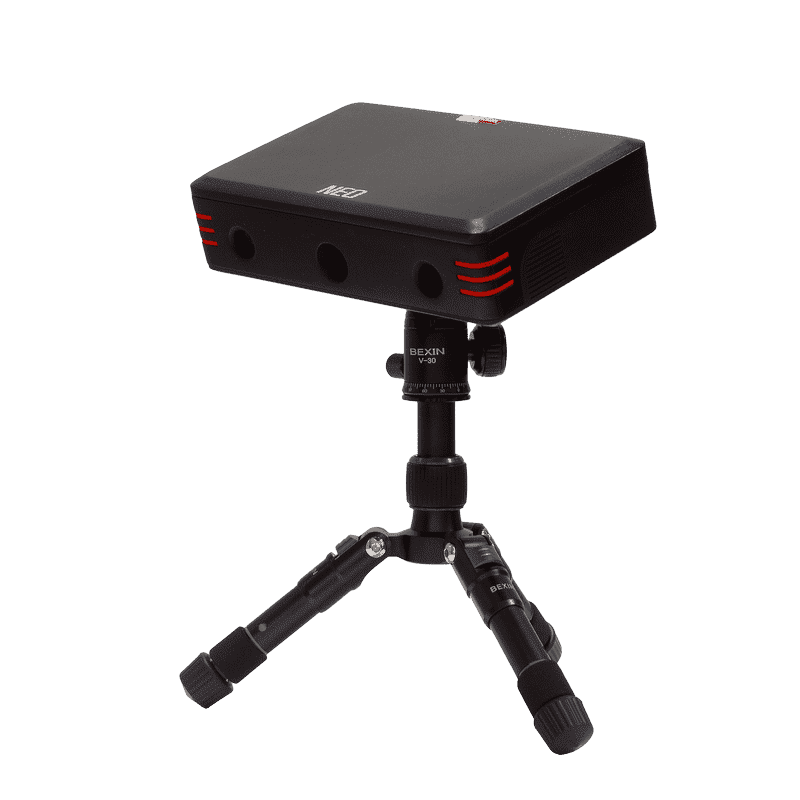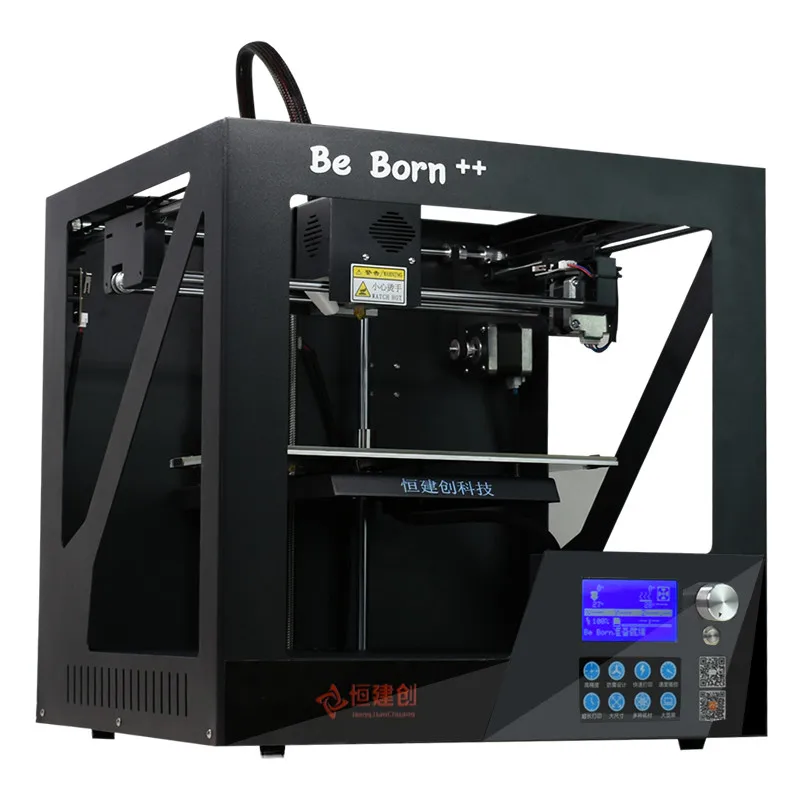3D body scanner medical
Best 3D body scanners in 2022
What is a 3D body scanner?
3D body scanners are designed to capture your full body in 3D. The result is a 3D model (also called 3D avatar) of your exact body shape with accurate data such as body measurements, posture analysis, textures, …
Originally developed for the fashion industry as fast and accurate 3D measurement solutions, 3D body scanners are now used in various other fields such as healthcare, 3D figurines and 3D photos, fitness, and entertainment.
We’ve selected some of the best body 3D scanners available and listed them here in this guide. Our selection focuses on full-body 3D scanning systems that are exclusively designed for 3D body scanning. We list a few handheld 3D scanner options further down the article.
A Texel 3D body scanner being used to attract customers to an event. Source: TexelBest 3D body scanners 2022: our selection
The table below recaps our selection of some of the best full-body 3D scanning options. The goal is to provide a quick, visual overview of the market; there are of course numerous other factors to take into account (software, customer service, …) to get the full picture for each solution and eventually make the right choice.
| Brand | Product | Country | Price Approximate starting prices based on supplier-provided information and public data. Prices may vary by region, over time and do not include additional products or services (taxes, shipping, accessories, training, installation, …). | |
|---|---|---|---|---|
| Fit3D | Proscanner | United States | $ 10,00010 000 €8,870 £1,490,560 ¥ | Quote |
| Size Stream | SS20 3D Body Scanner | United States | $ 15,00015 000 €13,306 £2,235,840 ¥ | Quote |
| TG3D Studio | Scanatic™ 360 Body Scanner | Taiwan | $ 15,00015 000 €13,306 £2,235,840 ¥ | Quote |
| Texel | Portal MX | United Kingdom | $ 34,90030 000 €30,958 £5,202,054 ¥ | Quote |
| Texel | Portal BX | United Kingdom | $ 45,65040 000 €40,493 £6,804,406 ¥ | Quote |
| botspot | BOTSCAN NEO | Germany | $ 200,000179 000 €177,408 £29,811,200 ¥ | Quote |
Expand to see more specs
The products in the table are ranked by price (low to high).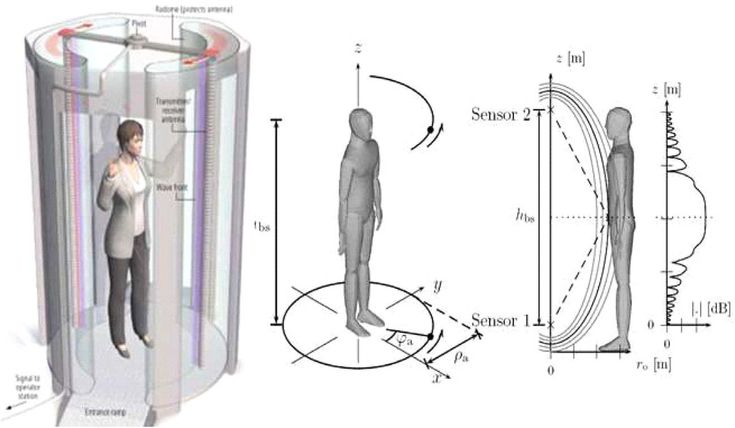
| Brand | Product | Technology | Max resolution | Country | Price Approximate starting prices based on supplier-provided information and public data. Prices may vary by region, over time and do not include additional products or services (taxes, shipping, accessories, training, installation, …). | |
|---|---|---|---|---|---|---|
| Fit3D | Proscanner | Structured light | – | United States | $ 10,00010 000 €8,870 £1,490,560 ¥ | Get a quote |
| Size Stream | SS20 3D Body Scanner | Photogrammetry | – | United States | $ 15,00015 000 €13,306 £2,235,840 ¥ | Get a quote |
| TG3D Studio | Scanatic™ 360 Body Scanner | Laser triangulation | – | Taiwan | $ 15,00015 000 €13,306 £2,235,840 ¥ | Get a quote |
| Texel | Portal MX | Structured light | 1 mm0.039 in | United Kingdom | $ 34,90030 000 €30,958 £5,202,054 ¥ | Get a quote |
| Texel | Portal BX | Structured light | 1 mm0.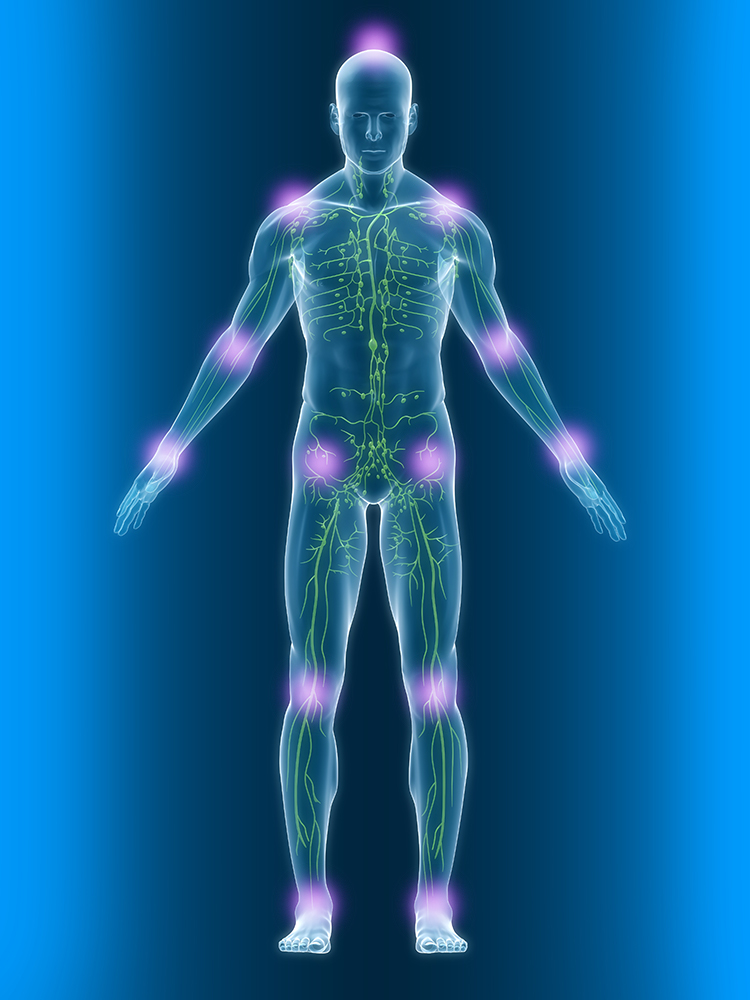 039 in 039 in | United Kingdom | $ 45,65040 000 €40,493 £6,804,406 ¥ | Get a quote |
| botspot | BOTSCAN NEO | Photogrammetry | 0.1 mm0.003937 in | Germany | $ 200,000179 000 €177,408 £29,811,200 ¥ | Get a quote |
Overview of the best full body 3D scanners
In this section, we give some more context and information about each 3D scanner from our selection.
The Fit3D Proscanner is a 3D body scanner for fitness and healthcare applications. It’s designed to provide a comprehensive wellness assessment based on a detailed 3D body capture.
This body scanning system is mainly used in gyms, health clubs, and fitness studios. The Fit3D Proscanner is able to accurately 3D scan a person in 40 seconds and to provide a posture analysis as well as a body shape wellness score.
Contact manufacturer Get a quote Add to comparison
The Size Stream SS20 3D body scanner is a versatile full body measurement system, designed to capture thousands of data points to create a 3D model of a person’s body. This 3D body scanning booth is primarily designed for 3D measurement to create custom clothing.
This 3D body scanning booth is primarily designed for 3D measurement to create custom clothing.
The Size Stream body scanner can also be used for 3D printing, measurement tracking, size surveys, and healthcare and fitness applications.
Contact manufacturer Get a quote Add to comparison
The Scanatic 360 Body Scanner by TG3D is designed for the fashion industry. It is lightweight and easy to move, and can be fully integrated within a fitting room. Scans take 3 seconds, and measurement points are available in 30 seconds.
TG3D develops software and applications that are tailored for the clothing industry.
Contact manufacturer Get a quote Add to comparison
The Texel MX can be used for the entertainment and advertising industry, for medical applications, and even as a digital fitting room.
It takes the Texel MX 30 seconds to perform a full 3D body scan, and just 60 seconds to create a digital 3D model with automatic rigging. As with the BX version, results can be directly used for 3D printing or 3D animation.
Contact manufacturer Get a quote Add to comparison
Texel (or Texel Graphics) is one of the leading manufacturers of 3D body scanners. Their solutions are suitable for a wide range of applications and can be customized for specific events, stores, or environments.
The BX is able to scan up to 40 people per hour and comes with a registration tablet for users to input their names and email address. 3D avatars are directly sent to their inbox and can be shared via social media.
Contact manufacturer Get a quote Add to comparison
The botscan NEO by German manufacturer botspot features a modular design and is customizable. This system uses a combination of structured light and photogrammetry to provide accurate and colored meshes.
For an easy user experience, the NEO comes with an intuitive mobile app. Its maximum scanning volume capacity is 1000 x 1000 x 2000mm.
Contact manufacturer Get a quote Add to comparison
Handheld 3D body scanning options
Some handheld color 3D scanners are suitable for 3D scanning faces, hands, arms, … They can also perform full-body scans, though the process takes a while and requires the customer or patient to stay still during that time. The portable color 3D scanners listed below can therefore be good options to scan specific body parts (e.g. head and chest for 3D avatars, an arm or leg for prosthetics) or for infrequent full-body scans.
The portable color 3D scanners listed below can therefore be good options to scan specific body parts (e.g. head and chest for 3D avatars, an arm or leg for prosthetics) or for infrequent full-body scans.
The iReal 2E is a versatile 3D scanning option in the entry-level price range. It uses VCEL structured light to capture medium- to large-sized objects. Like infrared light, VCEL light is invisible to the human eye and is therefore also particularly adapted to face and body 3D scanning.
Scantech has reported diverse use cases for the iReal 2E 3D scanner, namely in forensic investigations, healthcare, and even culture preservation. In the latter, Scantech’s customer 3D scanned a woman performing different Tai Chi movements– an interesting and uncommon application!
Contact manufacturer Get a quote Add to comparison
The EinScan H was launched alongside the EinScan HX in September 2020. It uses a combination of structured LED light and infrared light, with a built-in color camera for texture acquisition.
This 3D scanner can therefore serve a range of applications involving color capture, with uses in retail, art preservation, healthcare, and more. Furthermore, its infrared light is eye-safe and won’t blind users during a face or body scan.
Shining 3D’s versatile EinScan H is a great entry-level deal for most basic use cases, and its software is getting more intuitive by the update.
Contact manufacturer Get a quote Add to comparison
3D body scanning applications
Fitness and personal health
Fitness body scanners
Body scanners can be used in fitness clubs, gyms, and healthcare facilities. Fitness body scanners allow you to track the evolution of a person’s body through various 3D measurements such as body shape and posture.
Visualizing these evolutions on a 3D avatar is a strong motivational boost that can help increase gym members’ engagement and improve patient recovery processes.
Home body scanners
These 3D body scanners are consumer appliances made to monitor personal health and body shape as well as posture evolution, among other data points. Homebody scanners usually have a 360° rotating platform on which the user stands.
These 3D body scanners typically work with a smartphone app acting as a personal trainer, so users can easily track all their data and reach their fitness goals.
Fashion and apparel: made-to-measure clothing
The fashion and apparel industry was among the first to embrace 3D body scanning for several applications:
- Fast and accurate 3D measurements
- Made-to-measure clothing (custom clothing)
- Highly personalized recommendations
- Measurement surveys and anthropometric characterization
- Virtual fitting rooms
Users can obtain their own 3D avatar on their smartphone and use it to see how clothes fit without physically trying them on.
This is as useful for luxury, tailored clothing as it is for retail and e-commerce.
3D printed figurines and 3D photo
Also known as 3D selfies or 3D portraits, these miniature figurines of people are typically 3D printed from a 3D body scan. If you want to learn more about this application, you can visit our article dedicated to 3D printed figurines.
Here are a few 3D body scanner options that are designed for 3D figurines:
- Artec Shapify Booth
- Doob Dooblicator
- KODAK Full Body 3D Scanner
- Picanova 3D.me
- Pics3D Cobra
- Scanologics ScanLounge v2.5
- Twindom Twinstant Mobile
Healthcare
Healthcare and medical sectors are filled with opportunities for 3D body scanning. From monitoring body shape and posture during pregnancy to making custom 3D printed prosthetics and more, body scanners are increasingly used for use in the medical field.
Body scanning can also be used to accurately monitor skin recovery in the case of burns or to detect skin diseases at an early stage, thanks to specific 3D imaging systems.
How do 3D body scanners work?
To obtain a full body scan, the person holds a pose for a few seconds, which is the time it takes for the 3D scanner to capture images from all angles. The 3D software then reconstructs the final 3D model of the body by “stitching” all of the images together, generating a highly detailed 3D model. Models can have colors and textures depending on the type of body scanner that’s used.
During the 3D capture process, the subject can either stand on a rotating turntable facing a fixed 3D body scanner, or stand still while the sensors located all around the body scanning booth capture images from all angles.
Closed 3D body scanning booth (or body scanning cabin)
A body scanning booth is a closed cabin that is rigged with cameras or 3D scanners. These full-body 3D scanners look a bit like regular fitting rooms.
Full body scanner with rotating platform or turntable
To use these body scanners, the person stands on a rotating table facing a 3D body scanner, typically a vertical unit.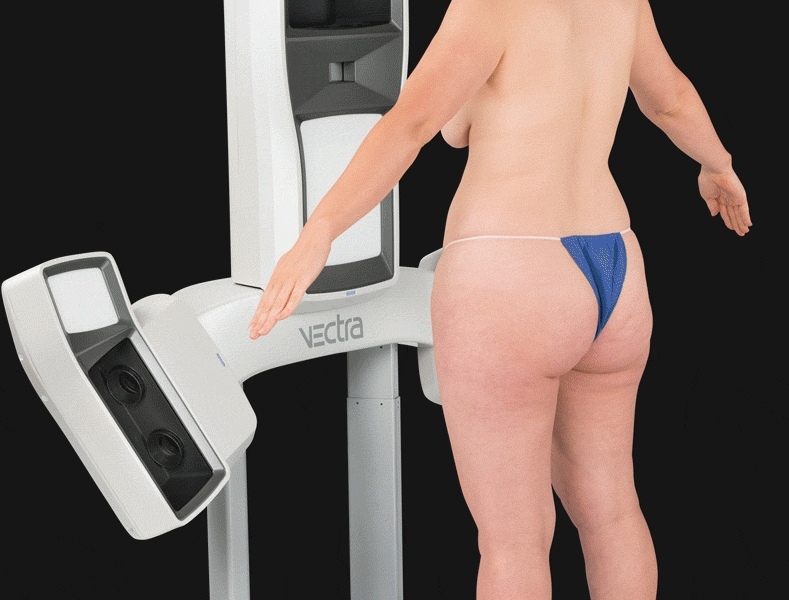 During the scanning process, the turntable rotates 360°, allowing the subject to be captured from all angles. The 3D model is generated once the full rotation is complete.
During the scanning process, the turntable rotates 360°, allowing the subject to be captured from all angles. The 3D model is generated once the full rotation is complete.
3D body scanning and the best full body scanners guide
What is 3D body scanning?
3D body scanning is the action of capturing in 3D the human body using a 3D body scanner.
3D body scanners can capture a human body, or only specific parts, to generate a very detailed 3D model within a few seconds. The result is a 3D model of the body or limb which was captured.
Depending on the desired application and on the 3D body scanner used, the 3D model can feature colors and textures to perfectly match the original person. It can also simply be a mesh, a sort of cloud of dots that form the body’s shape.
3D body scanners are revolutionizing the way we capture, measure, and track evolutions of the human body, in various fields from medical to fitness or entertainment. Recent improvements in whole-body 3D scanning technologies are leading to a growing number of applications.
Recent improvements in whole-body 3D scanning technologies are leading to a growing number of applications.
Initially developed for the clothing industry, 3D body scanners are greatly improving our ability to accurately measure and visualize a person’s body size, shape, and skin-surface area. Recent advances in whole-body scanning unlock new potential, especially for healthcare applications.
What are the benefits of 3D body scanning?
3D body scanning is the perfect technology to capture in 3D a full human body or specific parts. When compared to traditional body imaging and measurement technologies, 3D body scanning offers many benefits.
Non-invasive
3D body scanning is an entirely non-invasive process. The 3D scanner never physically touches the subject.
In the case of handheld 3D scanners, the device is held at a certain distance by the operator, who moves around the subject.
In the case of a 3D scanning booth, the subject simply stands in the middle of the booth to be captured in 3D from all angles by a number of sensors, all without direct physical contact.
Fast
Scanning a person with a 3D scanning booth takes less than 10 seconds. When using a portable 3D scanner, the process can take several minutes and requires the subject to stand perfectly still.
Accurate
3D body scanners are high-precision tools and usually boast high resolution to produce highly detailed 3D models. They can detect things the human eye can’t, making such 3D scanners very valuable in many circumstances.
The quality of the result depends of course on the type of body scanner being used. Some 3D scanning booths are capable of capturing several people at once with a stunning level of details, including colors and textures.
The top 3D body scanning applications
3D body scanning can have many applications.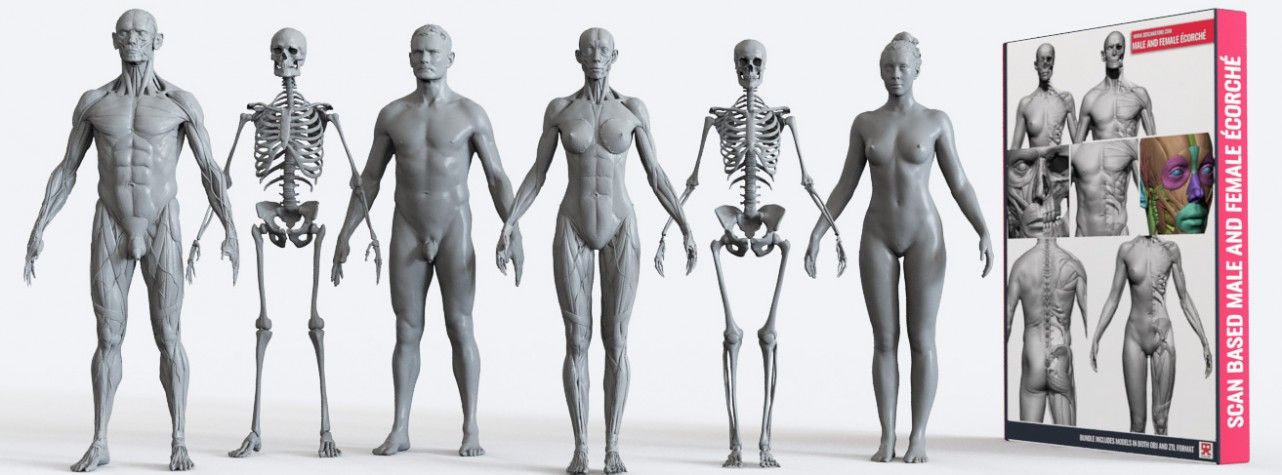 Among them, the most common are:
Among them, the most common are:
3D figurines
Also called 3D selfies or 3D portraits, 3D figurines are miniature statues of actual people. They are typically 3D printed from a 3D model obtained with a full-body 3D scanner, usually a 3D scanning booth. Full-color 3D printers are required to achieve such prints.
Fitness and body shape monitoring
3D body scanners are used in fitness to track the progress of a person through various body measurements, body shape metrics, posture analysis, and more.
Fashion and clothing
The Fashion industry is starting to use 3D body scanners to capture accurate body measurements in order to make custom and tailored apparel.
In retail, 3D body scanning unlocks new potential for in-store and online shopping with the emergence of virtual fitting rooms. Shoppers can use their own 3D avatar based on accurate body measurements to try on new clothes effortlessly.
Healthcare and medical
There are many applications of body scanning in medical fields, from monitoring a patient’s body shape to identify potential issues, to capturing highly detailed 3D models of body parts such as a disabled limb to make custom prosthetics, for example.
3D body scanning can also help monitor how fast a burn is healing by capturing in 3D the damaged skin, identifying the burnt tissues, and measuring the area to track progress thanks to colors and textures 3D scanning.
3D body scanning for the medical industry. Source: RobohunterAvatar creation
3D body scanning and 3D face scanning can be used in the entertainment industry to create realistic avatars, for use in video games, for example.
The best 3D body scanners and body scanning booths
Body scanning booths and full body 3D scanners
3D scanning booths are cabins rigged with 3D scanners or sensors.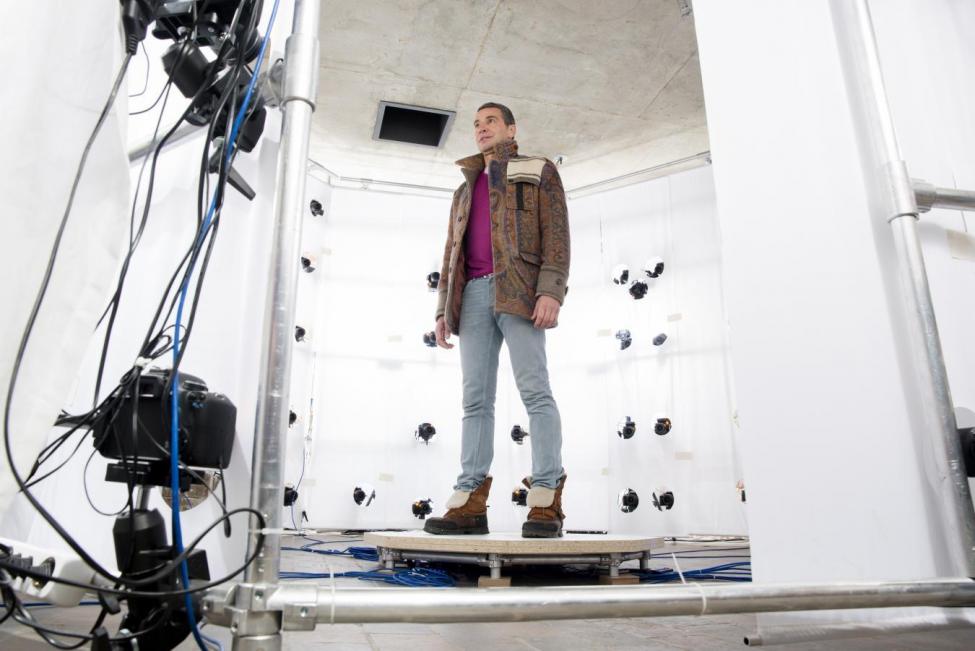 The person stands in the middle and holds still for a few seconds in order for the body scanner to capture images from all angles. The body scanner then generates a detailed 3D model of the person.
The person stands in the middle and holds still for a few seconds in order for the body scanner to capture images from all angles. The body scanner then generates a detailed 3D model of the person.
There are several types of 3D scanning booths:
- Closed 3D scanning booth or closed body scanner: A circular cabin rigged with cameras or 3D scanners, allowing the subject in the center of the booth to be captured in 3D from a 360° angle.
- Full-body 3D scanners: The subject stands on a rotating turntable facing a vertical 3D scanner. During the 3D body scanning process, the turntable rotates to allow the subject to be fully captured in 3D from all angles. The body scan is generated when the full, 360° rotation is complete.
The two main 3D scanning technologies used in body scanning are:
- Photogrammetry: A fast 3D capture process consisting of taking many pictures of an object at once and from different angles, then processing them through an algorithm to “stitch” them together and generate a 3D model.
 Photogrammetry technology delivers high-quality, colored, and textured body scans.
Photogrammetry technology delivers high-quality, colored, and textured body scans. - Structured light: A series of linear light patterns are cast on an object. The 3D scanner then generates an accurate 3D model using triangulation. This 3D scanning technology is highly accurate but requires the subject to be very still.
The two technologies can also be used in combination.
Portable and handheld 3D scanners
Handheld 3D scanners offer more flexibility than 3D scanning booths, as they can be carried around the subject to perform a body scan.
A face 3D scan performed by Pierre-Antoine when testing and reviewing a handheld 3D scanner.The downside is that the person being 3D scanned must remain completely still during the entire capture process; otherwise, the 3D scan is unusable. For this reason, in 3D body scanning applications, portable 3D scanners are typically used to capture body parts or limbs and not to perform full 3D body scans.
Some manufacturers specifically target their handheld 3D scanners at body scanning applications, like Shining 3D’s EinScan H.
3D body scanning for healthcare and medical applications
3D body scanners are getting increasingly used in the medical sector. Thanks to their non-invasive and fast way to capture the human body in 3D, whole-body 3D scanners are a perfect fit for applications in healthcare.
3D body scanners serve four major applications in the medical field.
Epidemiology
This is the study of the distribution and determinants of health-related states in specified populations. 3D body scanners can be used to do anthropometric surveys. For example, a study on the evolution of obesity amongst children.
3D full-body scanners are perfectly adapted to 3D capture many individuals in a short amount of time, enabling for example to obtain a meaningful sample for a study.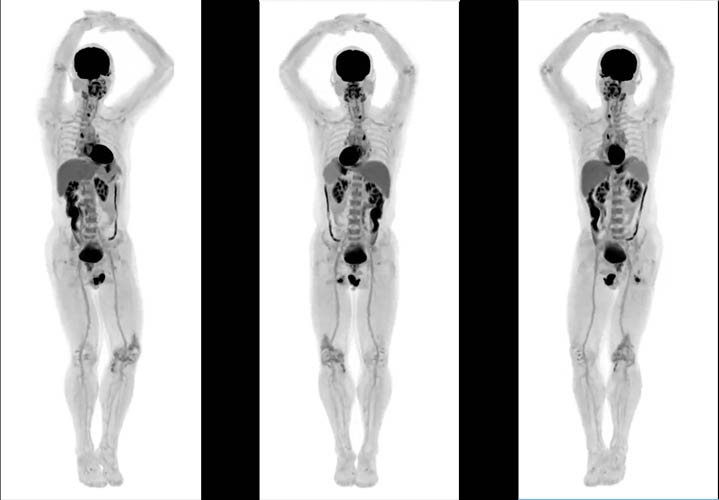
Diagnosis
Three-dimensional body scanning can help doctors make a diagnosis. For this type of use case, 3D scanners are mainly used to treat skin-related problems (burns, diseases, infections, wrinkles, …) and detect deformities through the analysis of the patient’s body captured in 3D.
Treatment
3D body scanners can be the difference between life and death for burn patients. To give the right amount of medicine to the patient, the amount of burnt skin needs to be perfectly calculated. Indeed, the drug quantity to deliver depends on the skin’s surface area; if the drug quantity isn’t perfectly dosed, the patient could suffer severe complications.
High-precision 3D body scanners or handheld 3D scanners can help accurately measure damaged skin surfaces.
Monitoring
Full-body 3D scanners can help monitor the changes in a patient’s body (shape, composition, etc. ), for example in the case of a diet or during pregnancy. Body scanners are a new tool to help doctors and practitioners better track the evolution of their patients’ body metrics, thus allowing for more accurate diagnoses and recommendations.
), for example in the case of a diet or during pregnancy. Body scanners are a new tool to help doctors and practitioners better track the evolution of their patients’ body metrics, thus allowing for more accurate diagnoses and recommendations.
Creating custom 3D printed prosthetics with 3D body scanning
Prosthetics are a great fit for 3D printing because they are mostly made of plastics and require to be customized to perfectly fit the patient. With 3D printing, it is now possible to make affordable prosthetics.
There are several open-source 3D models of prosthetics that have been developed by online communities such as The Open Hand Project. Voluntary designers and researchers join forces and collaborate, aiming to make prosthetics more affordable and better-fitted to the patients, especially kids whose prosthetics need to be upgraded regularly as they grow older and bigger.
A customized 3D printed prosthetic. Source: sciencealert. com
com3D models of such prosthetics can be downloaded for free and then modified to perfectly fit each patient, then 3D printed on a desktop 3D printer.
How can 3D scanning help create 3D printed prosthetics?
In order to make the 3D printed prosthetics perfectly fit the patient’s limb, the first step is to perform a 3D scan of the area where the prosthetic will be attached.
Using the resulting 3D model, the 3D design of the prosthetic is to be adjusted to accurately match the stump’s shape, thus making the prosthesis more comfortable, durable, and performant.
An arm getting 3D scanned to make a prosthetic. Source: douglasvanbossuyt.comIn such cases, a portable 3D scanner is typically chosen over a body 3D scanner, as there is no need for a full-body 3D scan.
3D body scanning for 3D printed figurines and 3D selfies
3D figurines, also known as 3D selfies, 3D portraits, or “mini-me’s” are 3D printed miniature figurines representing a person.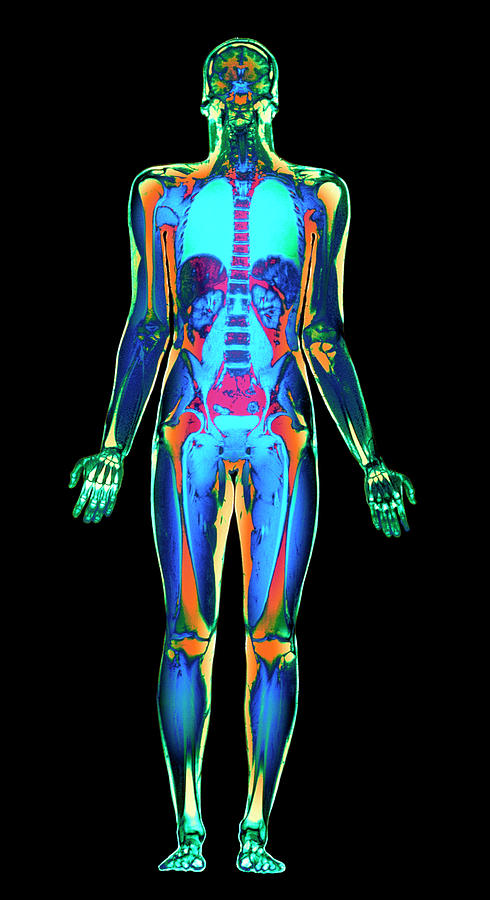 Some call this 3D photography.
Some call this 3D photography.
With the improvement of 3D scanning and 3D printing technologies, it is now possible to create such accurate 3D printed figurines, perfect as a gift or souvenir of an important life event, for instance.
Their are two steps involved in making a 3D portrait.
1. 3D body scanning the person
The person must first get 3D scanned, using a full-body scanner that can capture colors and textures. The best 3D scanners for 3D figurines are specifically designed 3D scanning booths.
The result is a highly detailed, colored, three-dimensional model of the person.
2. 3D printing the model
A few 3D printers are able to 3D print in color (they are called full-color 3D printers) but they are usually quite expensive and complex to operate.
That’s why most 3D figurine businesses resort to 3D printing vendors specialized in full-color 3D printing.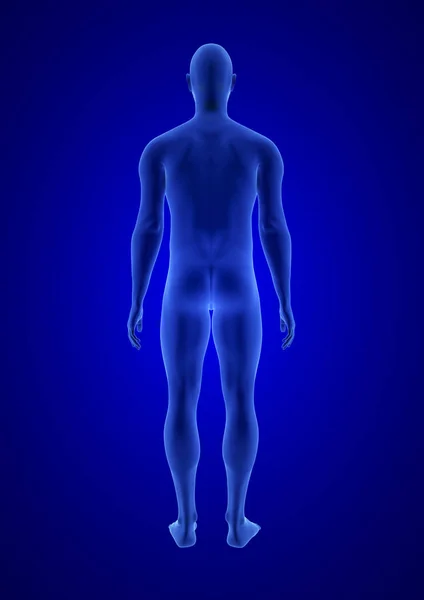 The 3D model is sent to the 3D printing service which will print it and ship it to the end customer.
The 3D model is sent to the 3D printing service which will print it and ship it to the end customer.
3D selfies make great presents and are perfect souvenirs for special occasions (weddings, graduations, …).
What is the best full-body 3D scanner for 3D printed figurines?
The process of making a 3D figurine starts with a 3D body scan. Such full-body 3D scans can be achieved either with a portable 3D scanner or with a 3D scanning booth.
In the case of 3D figurines, we strongly recommend the 3D scanning booth option, as the subject only has to hold the pose for a few seconds to get 3D scanned. Such booths are rigged with 3D scanners to capture the subject from all angles at once, with a very high resolution, colors, and textures.
With handheld 3D scanners, the human body 3D scanning process can take several minutes and the subject must remain completely still the entire time (a challenging feat for children or pets!).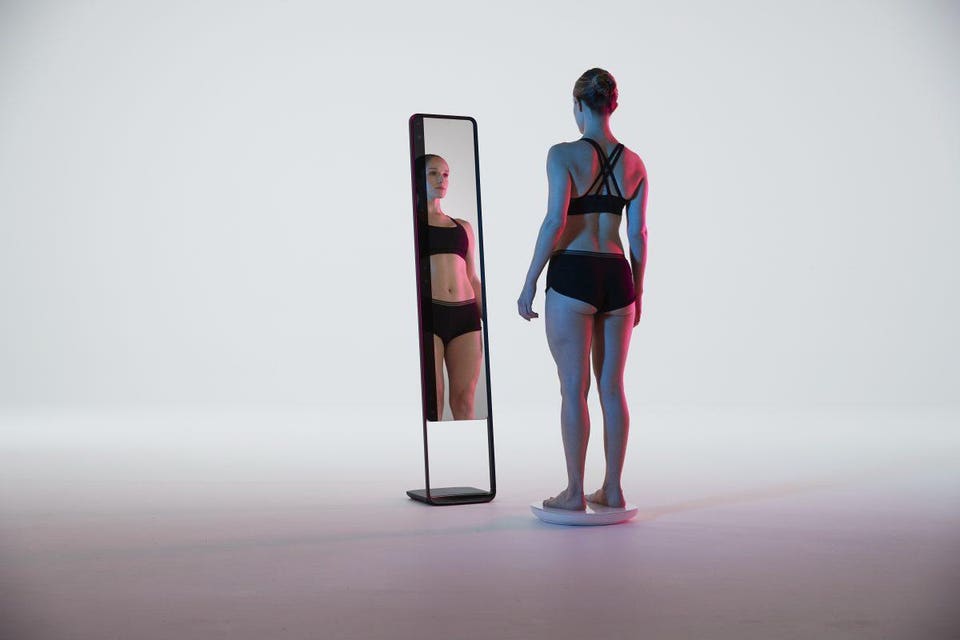 In both cases, the 3D model obtained is processed through a specific 3D software then sent for 3D printing.
In both cases, the 3D model obtained is processed through a specific 3D software then sent for 3D printing.
3D body scanning for fitness
Body measurement and fitness tracking using a 3D body scanner
3D body scanners can capture and monitor data about the human body. Full-body scanners can indeed capture thousands of data points on a human body and provide personalized reports and tracking. Body scanners are becoming popular in gyms and fitness centers, or even at home where they can be used almost as a personal coach.
With razor-sharp accuracy and 3D imaging capacities, 3D body scanners can help fitness enthusiasts track their progression and achieve their goals (weight loss, muscle build, etc.). Three-dimensional body scanning can also provide information about posture, body composition (fat vs muscle percentage), and body shape.
A 3D body scanner for fitness. Source: Fit3DThe body scanner becomes a fitness tracker and collects data points on a regular basis to show the user’s progression via 3D animated clips of the body shape, for example. It is important to note that such body scanners for fitness applications are usually not capable of capturing textures and colors, as they focus on body shape only.
It is important to note that such body scanners for fitness applications are usually not capable of capturing textures and colors, as they focus on body shape only.
The US company Fit3D developed the Proscanner, a 3D body scanner specifically designed for fitness tracking and comprehensive wellness assessment in gyms. They already are a fixture in gyms and fitness centers all over the world.
3D body scanning for fashion and the clothing industry
Creating virtual fitting rooms with 3D body scanning
A 3D body scan offers a precise 3D mapping and rendering of a person’s body. It can be used to create virtual fitting rooms where shoppers can easily visualize how pieces of apparel would fit on them, without actually having to wear them.
Some apparel retailers already make the most of virtual fitting rooms using 3D body scanning technology. The concept is simple: users create a profile based on their full-body scan. They can then virtually try on items from their home or from the in-store 3D body scanning booth.
They can then virtually try on items from their home or from the in-store 3D body scanning booth.
Virtual fitting rooms have a lot of potential in e-commerce since they can allow online shoppers to virtually try on clothes from the comfort of their home and make sure the size is right before purchasing, thus reducing the return rate.
Digital body measurement with 3D body scanners
3D body measurement can allow tailors and fashion brands to:
- Save time in the traditionally manual body measurement process
- Gather more accurate data on body measurements to create best-fitting shirts and suits.
By capturing in 3D all necessary data points for accurate body measurement in an instant, 3D body measurement systems or body scanning booth gives the opportunity to create custom-fit clothes more efficiently.
The company Acustom Apparel uses digital measuring 3D technology to gather every measurement and size from their customers and design custom-fitted attires.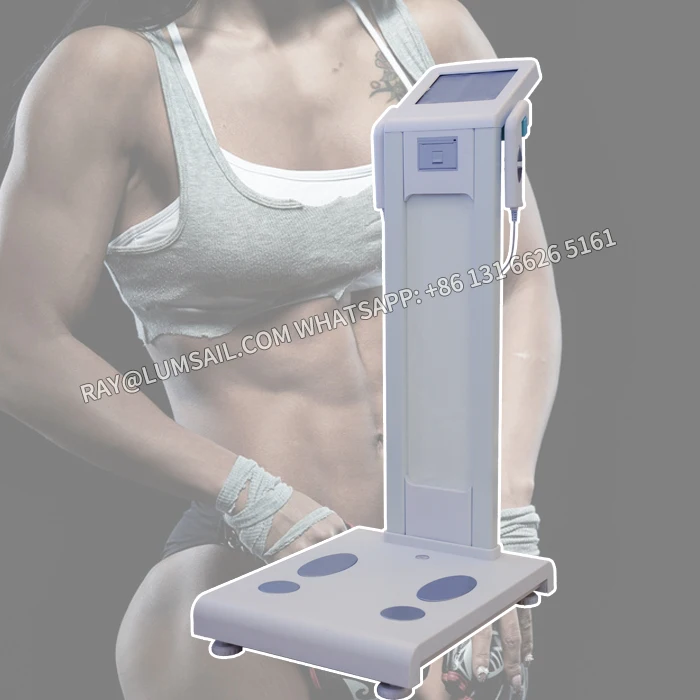 The company developed its own digital measuring technologies to gather around 2 million data points to create their customers’ 3D models. Based on this data and the customer’s personal preferences, an entirely tailored garment is created.
The company developed its own digital measuring technologies to gather around 2 million data points to create their customers’ 3D models. Based on this data and the customer’s personal preferences, an entirely tailored garment is created.
Create your own personalized avatar with 3D body scanning
3D body scanners can be used to create realistic avatars. In specific industries, such as retail or entertainment, avatars created with 3D scanning technology are meant to improve the customer experience.
For example, shoppers can use their own 3D avatar to virtually try on clothes instead of doing it physically.
Avatars are also heavily used in video games thanks to 3D face scanning, for example; in-game characters could look like the players themselves, for a more personalized and immersive gaming experience.
3D scanning in medicine. Types of 3D scanners and applications in medicine
- Optical
- Laser
- Dentistry
- Plastic surgery and cosmetology
- orthopedics
- Prosthetics
- Students training
- SCANPOD 3D UPOD 3D UPOD 3D UPOD 3D UP
A 3D scanner is an essential technology in medical research centers that allows you to get an accurate model of the body or its individual parts. This is an essential attribute for diagnosing various diseases, visualizing the results of an operation or designing surgical prostheses.
This is an essential attribute for diagnosing various diseases, visualizing the results of an operation or designing surgical prostheses.
Medical use of 3D scanning
3D scanning of a person is necessary for plastic surgeons, dentists, orthopedists and even cosmetologists. Before the advent of 3D technology, doctors had to take measurements manually, as well as create realistic dummies based on the information received: this is a hard and routine job that took a lot of time. 3D scanners have made medical procedures much easier: detailed information about a patient's anatomy can be obtained in minutes.
During the scan, the device recognizes the geometry of the body, and the sensors form a cloud of points. Based on the information received, the device software designs a polygonal body model and transfers it to the computer screen. The three-dimensional model becomes the basis for choosing the optimal method of surgical intervention, creating surgical prostheses, orthopedic shoes, and so on.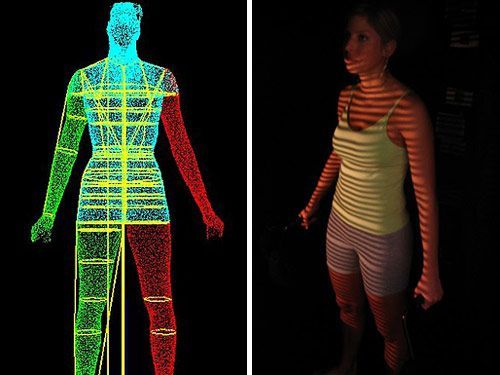
Benefits of 3D scanning
The 3D human scanner is used in all areas of medicine. Modern 3D scanners are replacing outdated diagnostic methods due to a number of advantages:
-
Three-dimensional models are more accurate and informative. At the diagnostic stage, some medical equipment makes errors, while 3D scanners show the best result;
-
Orthopedic corsets and insoles, created on the basis of a three-dimensional model of the patient, are much more accurate than plaster ones due to the consideration of aspects of individual anatomy;
-
Due to the high speed of work, new technologies allow you to get the necessary information urgently. Delay in medicine can cost a person's health and even life, and three-dimensional scanners help prevent the development of undesirable conditions;
-
Due to its safety, the technology is relevant for the diagnosis of adults and children.

Interesting! 3D-scan is used for operations on the cardiovascular system. Due to the high accuracy of the information received, surgeons choose the most relevant method of surgical intervention.
Types of 3D scanners
According to the principle of action in medicine, laser and optical 3D scanning is used. Each of these varieties has its own advantages, which we will discuss below.
Optical
The areas to be examined are illuminated with structured light, while the cameras record the result from different angles. The area is illuminated with a strip of light or a specific pattern (black and white stripes or squares). The deformation of the light or pattern conveys to the device information about the shape and depth of the object. The process is recorded by one or two cameras, which transmit information about the structure of the object to the computer software.
Such devices can be manual and desktop. In the first case, manual control of the device is used, in the second, the scanner is placed on the table. The main advantage of optical devices is the high speed of operation and the ability to transmit color.
Laser
The laser scanner measures the distance to the object under investigation and determines the actual length of the beams. The direction of the laser is controlled by encoders. Based on the analysis of the reflection of rays, a cloud of points is formed, which makes up a three-dimensional image of the object under study. The main advantage of such devices is the ability to digitize objects with a complex shape.
Attention! For the most accurate scan results, the patient must remain static.
Add to compare
Product added to compare Go
| Manufacturer | Range Vision |
Add to compare
Product added to compare Go
| Manufacturer | Shining 3D |
Add to compare
Product added to compare Go
| Manufacturer | Shining 3D |
Add to compare
Product added to compare Go
| Manufacturer | Range Vision |
Main directions in medicine
Three-dimensional scanning is actively used in almost all medical fields.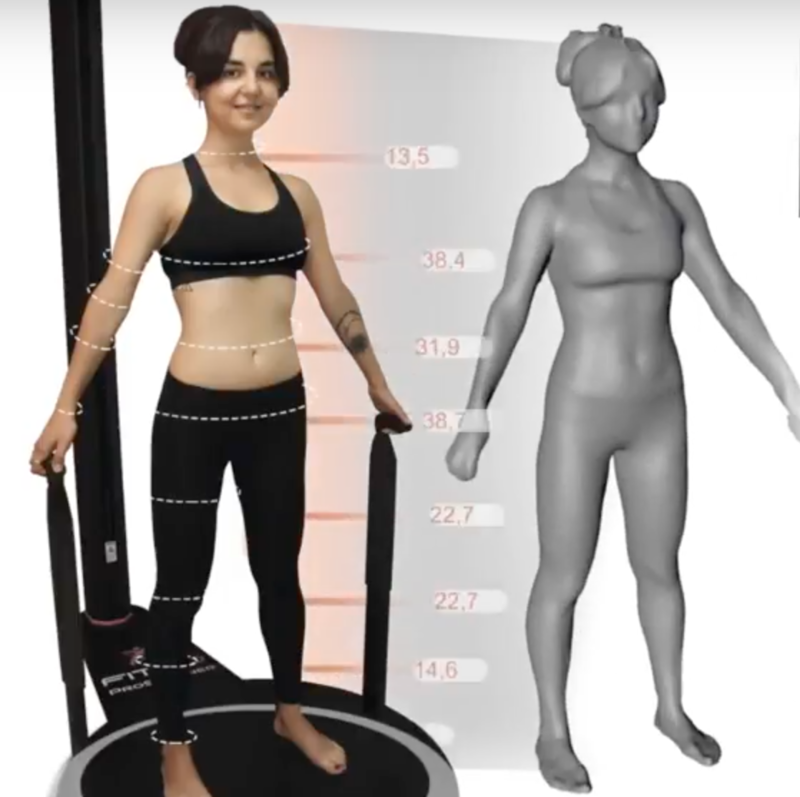 The presence of an accurate anatomical model helps to determine the current treatment regimen or to model a prosthesis. We must not forget the importance of virtual models for medical students: such schemes allow us to study the human anatomy in the most detailed way.
The presence of an accurate anatomical model helps to determine the current treatment regimen or to model a prosthesis. We must not forget the importance of virtual models for medical students: such schemes allow us to study the human anatomy in the most detailed way.
Dentistry
The use of an intraoral 3D scanner for diagnostics
The use of a dental 3D scanner to create a digital model of a plaster jaw prosthesis
Due to oncology, the Australian had to remove 80% of the upper jaw. The use of a 3D scanner helped create the perfect jaw prosthesis
3D dental scanning helps to create detailed virtual images of the patient's teeth. Thanks to this, the most complex restoration and restoration work is carried out, orthodontists design prostheses. The technology significantly reduces the time of manufacturing complex structures, and also saves the cost of producing plaster and other models.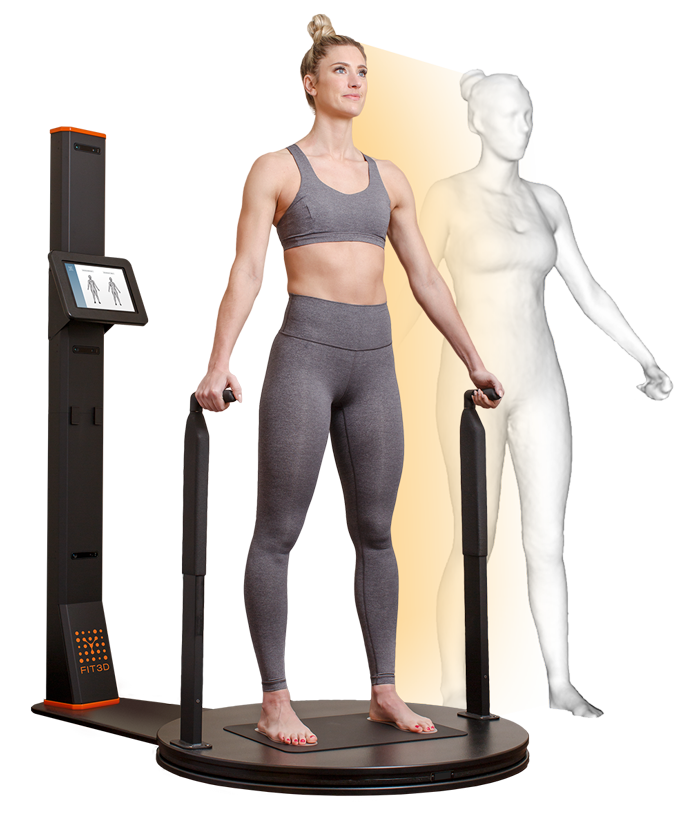
The 3D scanner is actively used in dentistry due to a number of advantages. The device is suitable for working with patients with an increased gag reflex. Just a few years ago, to create an impression of the teeth, an impression mass was placed in the patient's mouth: this procedure brought great discomfort. Nowadays, 3D-scanning of teeth is carried out contactlessly and does not bring discomfort.
Attention! The use of a 3D scanner in dental practice has a great advantage: the data obtained during the diagnostics is instantly transmitted to the laboratory.
Plastic surgery and cosmetology
face scan
Familiarization of the patient with the expected result of rhinoplasty based on a three-dimensional image of her face
3D face scanning is actively used in cosmetology and plastic surgery. The study is assigned to study problem areas before carrying out some cosmetic manipulations, as well as to design the expected result of plastic surgery. Thanks to this technology, the patient can get acquainted with how his face will look after surgery. The scanner is used for performing operations on the face (rhinoplasty, blepharoplasty) and body (mammoplasty, abdominoplasty, etc.).
Thanks to this technology, the patient can get acquainted with how his face will look after surgery. The scanner is used for performing operations on the face (rhinoplasty, blepharoplasty) and body (mammoplasty, abdominoplasty, etc.).
Orthopedics
3D scanning of the spine
3D scanning of the foot to study the anatomical curves
Orthopedic insole printed on the basis of a 3D image of the foot
3D scanning of the body is relevant in the process of determining the type and stage of curvature of the spine or foot. The use of x-rays to diagnose the spine and lower extremities does not provide such accurate information, and this procedure is contraindicated in some patients. 3D scanning helps to obtain detailed information about the pathology and develop actual orthopedic products (insoles and corsets).
For the manufacture of insoles, previously it was necessary to make an impression of the foot. If the doctor made mistakes, the cast turned out to be inaccurate, which affected the quality of the insoles. New technologies help to obtain the most accurate information, regardless of the doctor's actions.
If the doctor made mistakes, the cast turned out to be inaccurate, which affected the quality of the insoles. New technologies help to obtain the most accurate information, regardless of the doctor's actions.
Surgery
3D model of the heart created from scanned data
Siamese twin chest model. Based on the data obtained as a result of the scan, the surgeons managed to perform the most difficult operation to separate them.
The application of new technology plays an important role in surgery. Scanning is aimed at studying the features of the pathology, its location and blood supply. This information helps to carry out more accurate and safer operations, to prevent complications during surgery. In addition, scanning is used in the process of bioprinting tissues and organs for transplantation.
3D scanning is closely related to 3D printing: the surgeon gets the opportunity to study the model of the operated organ or part of the body, develop an actual scheme for surgical intervention and “hone” the movements.
Prosthetics
The use of a 3D laser scanner in transplantology
Prosthesis based on scan data
In the process of creating manual prostheses, it is necessary to accurately determine the location of tissues, muscles and blood vessels. If errors are made during the diagnosis, local necrosis may develop due to tissue rejection. Modern technologies allow collecting the most accurate information about the shape of the stump and the location of tissues to create high-quality and comfortable prostheses.
Student education
A student studies pathological anatomy based on a 3D cadaver model
Scanning helps medical students study anatomy more effectively. The new method is much more efficient than the use of 2D images in classical anatomical atlases. Some programs allow you to observe the surgical intervention: for example, the trajectory of the scalpel during the operation.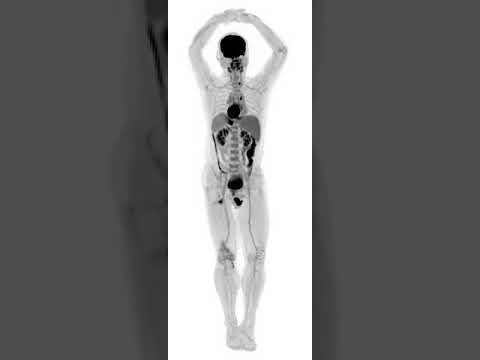
Interesting! In France, a 3D scanner is being used to study pathological anatomy. There was no need for an in-person autopsy, and the resulting schemes make it possible to study the human body in layers.
Add to compare
Product added to compare Go
| Manufacturer | Medit |
Add to compare
Product added to compare Go
| Manufacturer | 3Shape |
Add to compare
Product added to compare Go
| Manufacturer | ScanPod3D |
Add to compare
Product added to compare Go
| Manufacturer | Shining 3D |
Popular medical 3D scanners
A high-quality three-dimensional scanner provides accurate body diagnostics and successful operations. Next, we list a few scanners that have managed to establish themselves in the global market.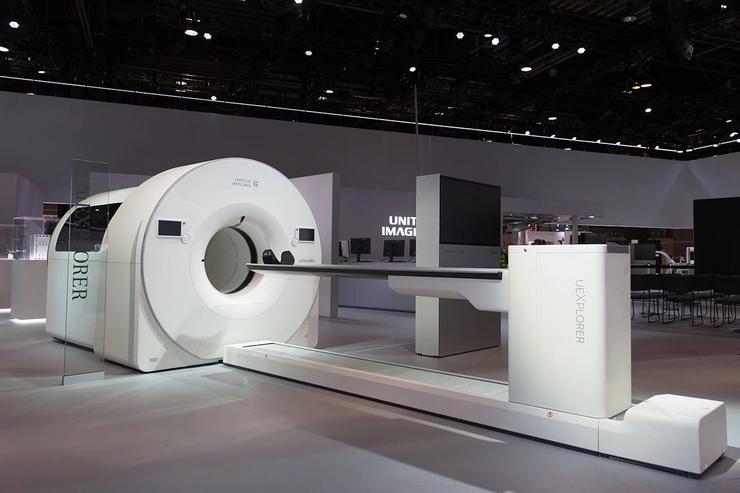
Shining Autoscan DS-EX
The device has an open, user-friendly platform that facilitates the scanning process. Various modules are easily installed on the platform, thanks to which the models are scanned in the articulator, the dental impression is examined from various angles, etc. A 3D scanner is used in a dental laboratory to create a virtual patient model, create a treatment plan, design crowns and jaw prostheses. The device is compact and highly accurate.
ScanPod 3D UPOD-S
An orthopedic scanner is used to obtain monochrome and color images. Despite its compactness, the device has a large scanning area, and high speed allows you to use the scanner in emergency mode. In addition, ScanPod 3D UPOD-S is capable of performing 40 operations on the resulting image, and also provides the ability to compare the anatomical features of the right and left foot. You can learn more about the features of the scanner in our review.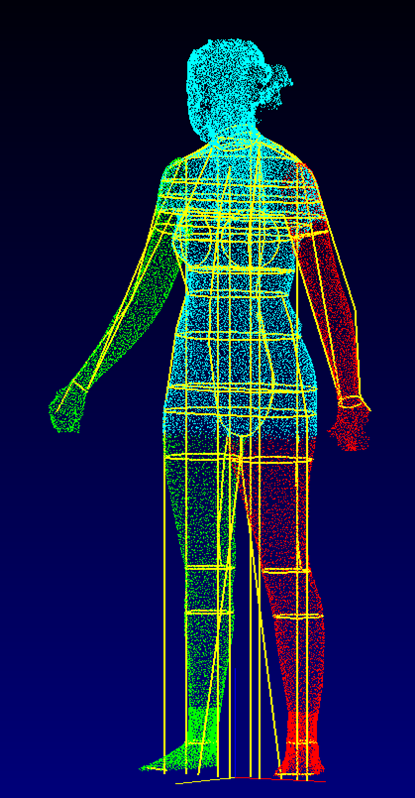
Medit i500
The intraoral 3D scanner allows you to scan the entire oral cavity in a matter of minutes. A 3D Full HD color image is displayed on the screen. A small scanning module provides convenience to the doctor during the examination and does not bring discomfort to the patient. Due to its low weight, it is convenient to use even during long-term diagnostics.
3Shape TRIOS 3 Basic Pod
The compact device provides maximum comfort for both doctor and patient during diagnostics. The intraoral scanner works non-contact: no special powders need to be used for the procedure. The resulting color image is sent to the computer screen in high resolution. The CAD/CAM software provides the ultimate in ease of use, and thanks to the USB port, the 3Shape TRIOS 3 Basic Pod can be connected to any computer.
ScanPod3D USOL
ScanPod3D USOL is a compact orthopedic scanner that allows you to quickly and accurately scan the foot of one foot.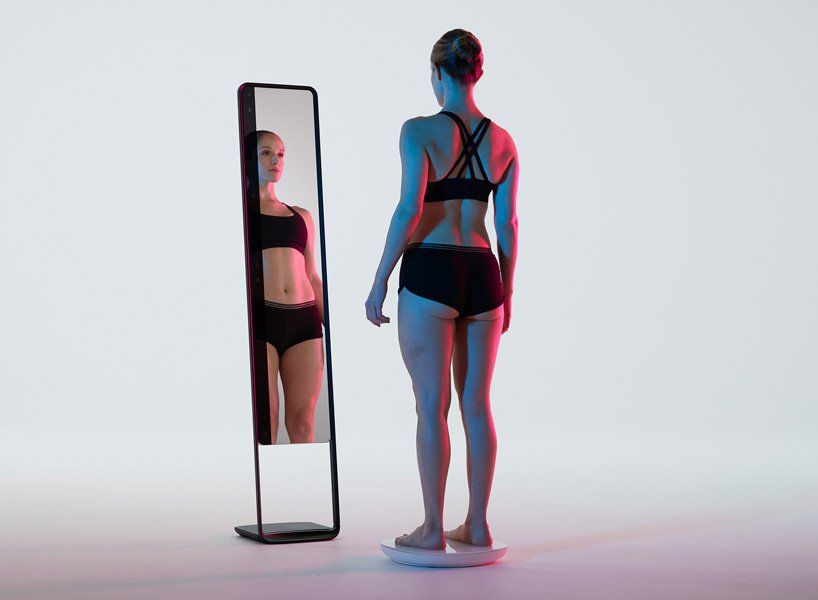 The resulting image can be scaled and rotated for detailed viewing. Diagnostics can be carried out without load, with partial and full load. The device scans the arch, insoles and lasts, and the RX shape setting is used to create orthopedic shoes.
The resulting image can be scaled and rotated for detailed viewing. Diagnostics can be carried out without load, with partial and full load. The device scans the arch, insoles and lasts, and the RX shape setting is used to create orthopedic shoes.
Calibry
The portable handheld scanner allows you to get a digital image of objects from 20 cm to 10 m. Weight is 900 g, so operation is not difficult. The touch screen displays the result of the scan, so there is no need for constant checking with the computer. The scanner is used to examine the fine details, and the powerful software ensures easy operation. Calibry is used in 3D scanning of the spine, face, joints and other parts of the body.
Shining 3D EinScan H
The handheld scanner is lightweight and compact, making it easy to carry around. The use of the latest developments in data capture helped to achieve stunning scan results: up to 1,200,000 points per second. Shining 3D EinScan H has a number of advantages:
Shining 3D EinScan H has a number of advantages:
-
Whole body scanning solution;
-
Reliable color reproduction;
- Fast scanning 1200000 points / sec.;
-
High accuracy of 0.05mm scan data.
The new 3D scanner for human scanning provides the most accurate and detailed information about the structure of tissues and organs.
Forecasts of the development of 3D technologies in medical practice
According to International Data Corporation (IDC) forecasts, by 2023 the industry is expected to increase in the amount of 635 million units. This means that due to the high accuracy of diagnostic data and the improvement of software, most modern clinics will prefer the use of three-dimensional scanners instead of outdated diagnostic equipment.
Add to compare
Product added to compare Go
| Manufacturer | Thor3D |
Add to compare
Product added to compare Go
| Manufacturer | Shining 3D |
Add to compare
Product added to compare Go
| Manufacturer | 3Shape |
Add to compare
Product added to compare Go
| Manufacturer | ScanPod3D |
#Application
An expert in the field of additive and subtractive technologies, 3D equipment and CNC machines with over 10 years of experience.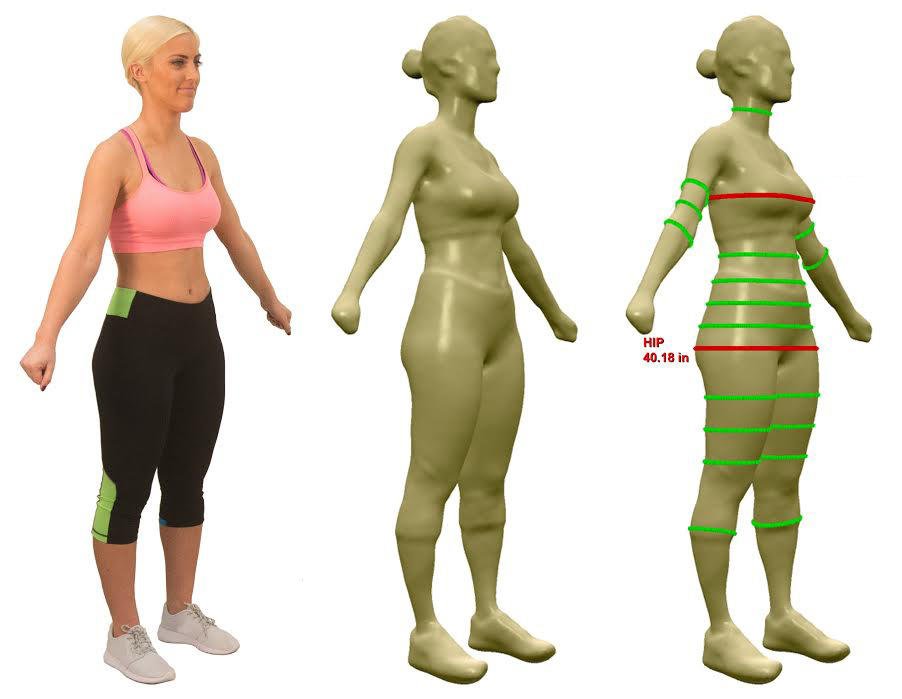
Share
all materials
Do you have any questions?
Our specialists will help you with the choice of 3D equipment or accessories, consult on any questions.
3D scanners in medicine and dentistry
Supplier of 3D equipment since 2010
+7 495 646-15-338 800 333-12-82
3D-scanners3D-printer-service Support
On the Project-Processing Supervision Service Supportment.0003 Blog
Contacts
A 3D scanner is an important attribute of medical research centers and practicing medical institutions around the world. With the help of three-dimensional scanners, it is possible to obtain, for example, an accurate 3D model of the structure of the human body or its individual parts. Plastic surgeons can create an accurate color 3D model of the breast, face, and any other part of the body in minutes and visually demonstrate the results of future work.
- 3D medical innovation
- Opportunities
- Choosing 3D scanner
- 3D-innovations in medicine
- Opportunities
- Choosing 3D scanner
- Scan any part of the body to create functional prostheses
- 3D archiving - no need to store multiple castings
- Modeling and planning in plastic surgery
- Orthopedics and cosmetology, dentistry
- Scanning the head of a child to fit a soft helmet
- Follow-up head scan to track change
- Color and texture wound scanning for quick selection of treatment methods.
- Scan any part of the body to create functional prostheses
- 3D archiving - no need to store multiple castings
- Modeling and planning in plastic surgery
- Orthopedics and cosmetology, dentistry
- Scanning the head of a child to fit a soft helmet
- Subsequent head scan to track change
- Color and texture wound scanning for quick selection of treatment methods.
3D-infections in medicine
Three-dimensional scanners are successfully used by prostheticians and orthopedists to create high--the-fluids of body parts. This means that specialists can produce prostheses that are ideal for their patients without spending as much money on design as before.
This means that specialists can produce prostheses that are ideal for their patients without spending as much money on design as before.
Previously, the process of producing prostheses and corsets was labor-intensive and uncomfortable. The patient was covered with plaster and waited. After hardening, the gypsum was cut off and sent to production. The manufacturer received the form and manually took measurements.
Now that medical institutions have the opportunity to use 3D scanners, there is no longer a need for expensive and time-consuming work to create plaster models, there is no need to contact the delivery service and wait for the cargo to arrive. Corsets created according to a 3D model are more accurate than plaster corsets, because they take into account all the nuances of the body structure.
More recently, the design of dentures took several weeks. Now, thanks to the advent of ultra-precise 3D scanners, the process is simplified and accelerated to several days.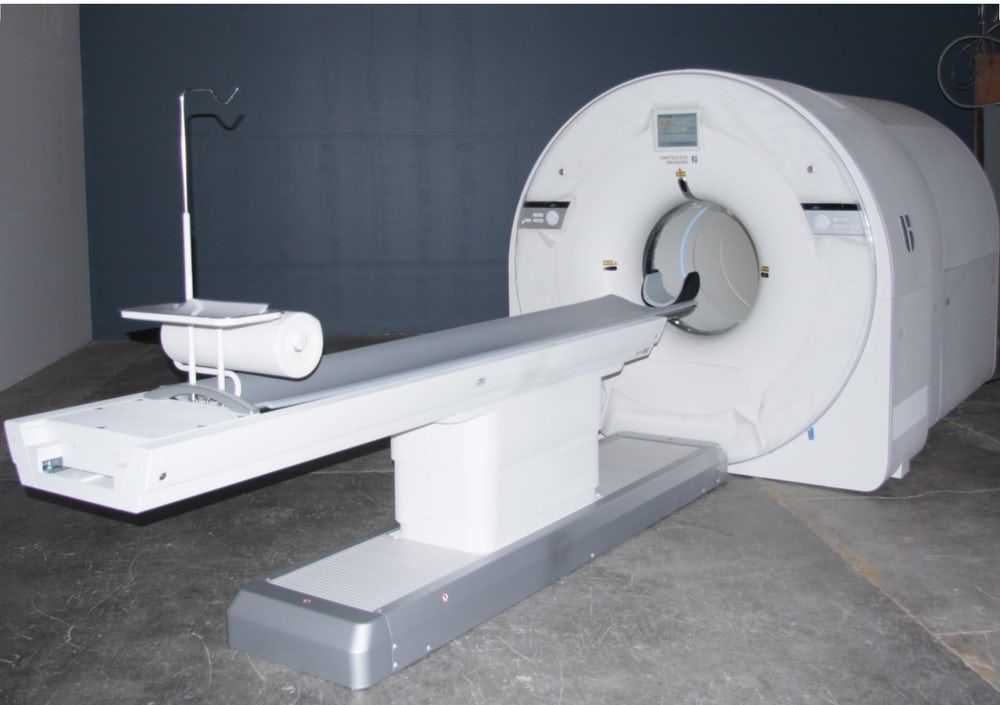
3D innovations in medicine
3D scanners are successfully used by prosthodontists and orthopedists to create high-precision scans of body parts. This means that specialists can produce prostheses that are ideal for their patients without spending as much money on design as before.
Previously, the process of producing prostheses and corsets was labor-intensive and uncomfortable. The patient was covered with plaster and waited. After hardening, the gypsum was cut off and sent to production. The manufacturer received the form and manually took measurements.
Now that medical institutions have the opportunity to use 3D scanners, there is no longer a need for expensive and time-consuming work to create plaster models, there is no need to contact the delivery service and wait for the cargo to arrive. Corsets created according to a 3D model are more accurate than plaster corsets, because they take into account all the nuances of the body structure.
More recently, the design of dentures took several weeks. Now, thanks to the advent of ultra-precise 3D scanners, the process is simplified and accelerated to several days.





